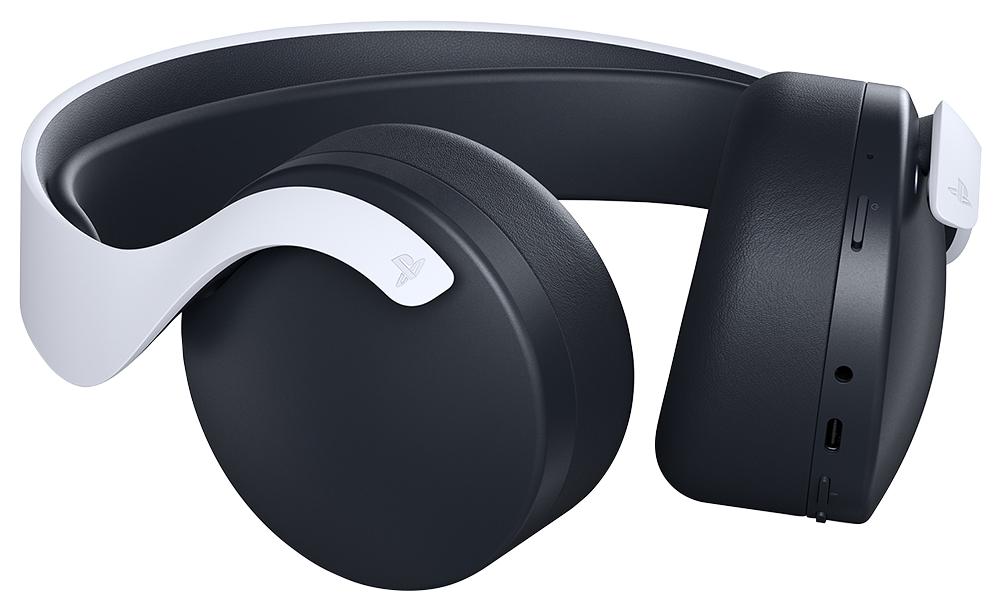
Games with traditional stereo soundscapes, like Yakuza: Like a Dragon, can feel much thinner by comparison – and subsequently the mix is a bit more jumbled. The audio in games designed around the Tempest Engine – like Demon’s Souls, for example – feels big with these cans, allowing you to appreciate the sense of presence that PlayStation has hooked its marketing cart to. However, the performance is a tick above average, with rounded bass and an overall good sense of space. At the end of the day you get what you pay for, and so you won’t find studio quality sound here. Given its price point, the Pulse 3D Wireless Headset is unlikely to be on the radar of audiophiles – and it’s not trying to be. Pulse 3D Wireless Review: How Does It Sound? The aforementioned USB dongle is much more discreet than the one included with the Platinum Wireless Headset, but provides roughly the same range it flawlessly covers a couple of average sized rooms, but don’t expect to still hear your audio outside of that. Obviously, the controls on the cans don’t interface with every device, but the integration with the PS5 and PS4’s user interface is one of the main selling points here, as you’re given visual feedback when you adjust the volume or mute the microphone.Ĭharging is conducted using an included USB-C cable, which is the same as the DualSense controller, and is relatively fast – although we did notice some very minor electrical static in the left channel when we played while plugged in. The included USB dongle can be plugged into a PS4, PC, or even a Nintendo Switch for wireless audio, while there’s a standard 3.5mm audio cable included for everything else – such as the PSVR headset, for example. It’s worth noting that, despite the PS5 centric marketing, this accessory can be used pretty much anywhere. The cups are slightly more compact, making for a snugger overall fit – which we personally appreciate – although this does mean that battery life is on the lower end of what you’d expect for a wireless headset Sony advertises about 12 hours, but our testing pegs the reality closer to ten.

#Ps5 pulse 3d headset Ps4#
While it’s more expensive than the discontinued – and, honestly, extremely rudimentary – Gold Wireless Headset from the previous generation, it’s cheaper than the Platinum Wireless Headset, which Sony promoted as 3D capable cans during the PS4 era.Īnd yet it shares a lot in common with that headset: the complicated button layout, situated around the exterior of the left cup, is almost identical – and it has the same set of core features, including simulated 3D sound, which works in conjunction with the PS5’s heavily marketed Tempest Engine technology. Retailing for £89.99/$99.99, the Pulse 3D Wireless Headset finds itself on the lower end of the price spectrum when it comes to dedicated wireless gaming headsets. Please read our FTC Disclosure for more information. Please note that some external links on this page are affiliate links, which means if you click them and make a purchase we may receive a small percentage of the sale. Pulse 3D Wireless Headset Review: Should You Buy It?.Pulse 3D Wireless Headset Review: Is It Comfortable?.Pulse 3D Wireless Review: How Does It Sound?.Pulse 3D Wireless Headset Review: What Do You Get?.

That’s where, in our opinion, Sony’s line of officially branded Pulse headsets come into play – and its latest option, the PlayStation 5-focused Pulse 3D Wireless Headset, is no exception. Of course, great audio deserves a premium pair of cans, but balancing budget against sound quality can be a predicament for many players. And yet sound can make or break an experience: when it’s good, like in The Last of Us: Part II, it sucks you into your surroundings, providing a sense of presence – but when it’s bad, like in the tinny Assassin’s Creed Valhalla, it only serves to irritate. Video games are an inherently visual medium – the clue, after all, is in the name.


 0 kommentar(er)
0 kommentar(er)
